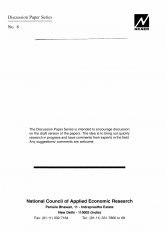Growth of Literacy Among SCs and STs Across States
January 2000
In census enumeration a person is counted as literate if he or she can read and write in any language with understanding. In earlier censuses the whole population has been classified into literates and illiterates. From 1951 the questions on literacy have been canvassed among those aged 5 and above only. Since 1991 this classification has been confined to the age group 7 years and above. As such these estimates of percent literate obtained from census documents are not strictly comparable over time. Census documents also contain total population and the number of literates among various population groups. Dividing the later by the former we obtained the estimates of literacy rates in total population - we have cetted General Literacy Rates which are comparable over time and various population groups under consideration. Discussion and analysis that follow are in terms of these estimates of literacy among population in all age groups. This paper makes a comparative assessment of relative performance of major states in growth of literacy during 1961 - 91 with emphasis on the performance of backward communities like Scheduled Castes (SCs) and Scheduled Tribes (STs). Even after prolonged efforts we have failed to make satisfactory progress in raising literacy among certain population groups. Education is a subject in the concurrent list with state government as the main actor. State policies and sociocultural factors have a bearing on the differential performance of the states and the population groups within the state. A comprehensive study of these factors and state policies iottowed so far is celled for.
Human Development and Data Innovation







